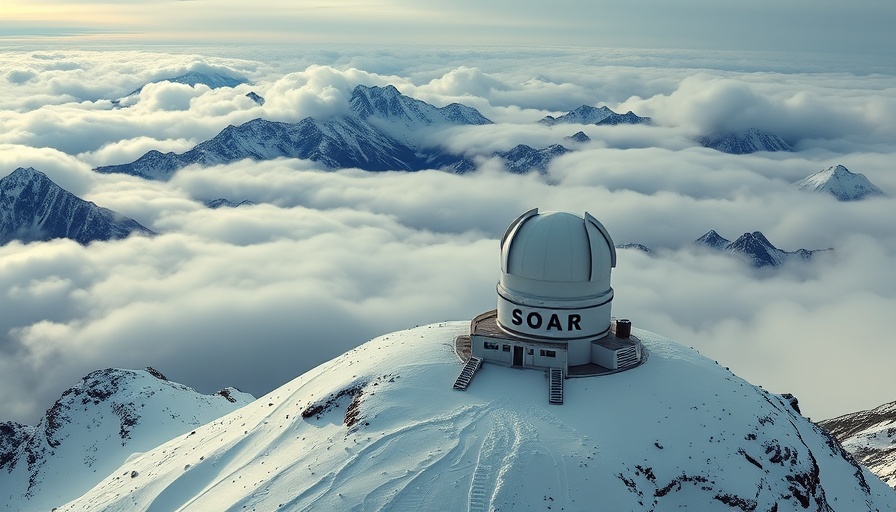
Snow-Covered SOAR Telescope: A Rare Event in the Atacama Desert
The Southern Astrophysical Research (SOAR) Telescope, sitting at the peak of Cerro Pachón in Chile, was recently adorned with a delicate layer of snow, a sight that has captured the attention of astronomers and space enthusiasts alike. This 13.4-foot (4.1-meter) telescope has been a central hub for research in the Southern Hemisphere, utilizing optical and near-infrared astronomy to delve into the mysteries of the universe.
The Impact of Weather on Astronomy
This unexpected winter storm brought significant snowfall to a region known for being the driest on Earth, highlighting the delicate balance between astronomical observation and environmental conditions. While the SOAR Telescope managed to handle this weather event gracefully, other observatories in the area faced dire consequences. For instance, the Atacama Large Millimeter/submillimeter Array (ALMA) facility, located at a lower elevation, had to suspend scientific operations due to the harsh weather impacting its sensitive equipment. Just a little snow can dramatically affect operations when temperature-sensitive technologies are involved.
Why the SOAR Telescope Matters
The SOAR Telescope has played a pivotal role in astronomical research since its inception in 1987, established by an international partnership including the University of North Carolina at Chapel Hill, Brazil, and Michigan State University. It’s known for its contributions to various astronomical discoveries and provides essential data that feeds into bigger discussions surrounding innovation in space exploration.
Examining the Broader Implications of Such Events
The delicate dusting of snow over the SOAR Telescope serves as a loose metaphor for how innovation in space and tech is sometimes subject to the whims of nature. Just as the commute to a launch site can face weather delays, so too can our technological advancements in space exploration be stymied by unforeseen environmental factors. This emphasizes the importance of developing robust systems capable of operating under a variety of conditions, which is a pressing consideration for the future of space technology.
Considerations for Future Technologies
As we move towards increasingly advanced technologies in space exploration, the relationship between environmental factors and innovation will only grow more critical. Space agencies and private companies alike should prioritize creating adaptable systems that can thrive despite weather-related interruptions.
The Landscape of Astronomy in the Face of Climate Change
This recent snowfall raises additional considerations about climate change. With weather patterns becoming more unpredictable, the astronomical community may face heightened levels of operational interruptions. How telescopes and observatories adapt to such changes can pave the way for future technologies that not only enhance our understanding of space but also protect our research facilities from adverse weather conditions.
In summary, while a light snowfall may seem picturesque, it serves as a reminder of the essential connection between innovation and nature. As we look to the stars, we must also consider the earthly conditions under which our best technologies operate.
 Add Row
Add Row  Add
Add 




 Add Row
Add Row  Add
Add 

Write A Comment